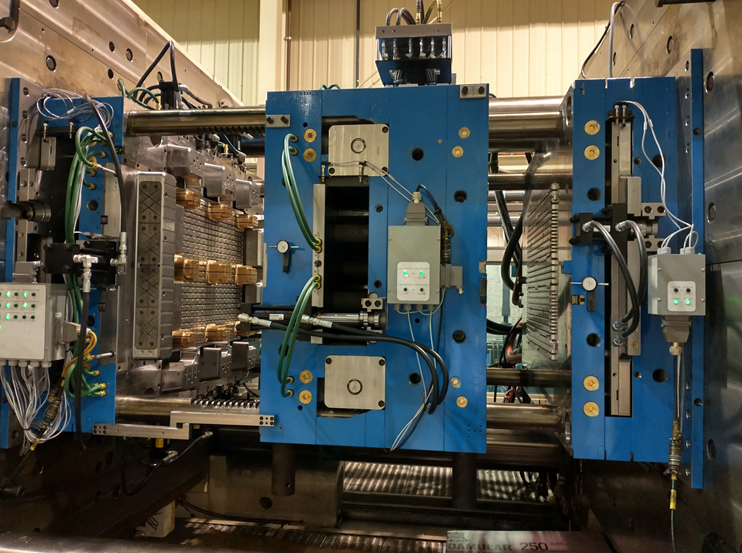Crate Mould: Creating Quality Packaging Solutions
Packaging plays a crucial role in the transportation and storage of goods. It ensures that products are protected from damage and remain in optimal condition throughout their journey. One of the key components of packaging is crates. Crates are widely used in various industries, including logistics, agriculture, and manufacturing, due to their durability and versatility. These crates are made using crate moulds, which are designed to create high-quality packaging solutions.
Crate moulds are manufactured using advanced techniques and materials to ensure their durability and precision. The process begins with the design phase, where engineers use computer-aided design (CAD) software to create a detailed blueprint of the mould. This blueprint includes all the necessary dimensions and specifications required for the final product. Once the design is finalized, it is sent to the production team, where skilled technicians begin the manufacturing process.
The first step in manufacturing a crate mould is selecting the appropriate material. Most crate moulds are made from high-quality steel or aluminum alloys. These materials offer excellent strength and resistance to wear and tear, ensuring that the mould can withstand the pressures of repeated use. The selected material is then cut into the desired shape using precision cutting tools, such as CNC machines. This ensures that the mould’s dimensions are accurate and consistent.
After the initial shaping, the mould undergoes a series of machining processes to refine its surface and create the desired features. These processes may include milling, drilling, and grinding, depending on the specific design requirements. Each step is carefully executed to ensure that the mould’s surface is smooth and free from any defects that could affect the final product’s quality.
Once the machining processes are complete, the mould is subjected to heat treatment to further enhance its strength and durability. Heat treatment involves heating the mould to a specific temperature and then cooling it rapidly. This process helps to eliminate internal stresses and improve the mould’s hardness and toughness. It also increases the mould’s resistance to wear and corrosion, ensuring a longer lifespan.
After heat treatment, the mould undergoes a thorough inspection to ensure its quality. Skilled technicians carefully examine every aspect of the mould, checking for any defects or imperfections. They use specialized tools, such as coordinate measuring machines (CMM), to measure the mould’s dimensions and ensure that they meet the required specifications. Any issues detected during the inspection are promptly addressed and rectified to ensure the mould’s integrity.

Once the mould passes the inspection, it is ready for use. It can be mounted onto an injection moulding machine, where it will be used to produce crates. The injection moulding process involves injecting molten plastic into the mould cavity, allowing it to cool and solidify into the desired shape. The finished crates are then ejected from the mould, ready for immediate use.
Crate moulds play a vital role in creating quality packaging solutions. Their precision design and manufacturing processes ensure that the resulting crates are durable and reliable. With the use of advanced techniques and materials, crate moulds are able to withstand the demands of repeated use, providing a cost-effective and efficient packaging solution for various industries. From logistics to agriculture, crate moulds continue to deliver high-quality packaging solutions that protect and preserve products during transportation and storage.
이전의:Creating a Mold for a Plastic Children’s Chair
다음: Innovating with Plastic Pallet Molds: Benefits, Challenges, and Case Studies
-
Innovative design, plastic large turnover box mold is more efficient
2024-3-19
Plastic large turnover box mold, this thing sounds very professional, but in fact it is a powerful assistant in our indu...
세부 정보보기 -
Creating a Chair Mold: A Guide to Crafting Your Own Unique Seating Design
2023-6-10
Chairs are essential pieces of furniture in any space, be it in your home, office, or public area. They provide comfort ...
세부 정보보기 -
China Injection Molding Parts: A Guide to Manufacturing and Applications
2023-5-11
Introduction Injection molding is a manufacturing process that involves the production of parts by injecting molten mate...
세부 정보보기 -
Creating the Perfect Plastic Pallet Mold: Designing High-Quality Solutions
2023-7-10
Introduction In today's fast-paced and globalized world, the demand for efficient and durable plastic pallets is at an a...
세부 정보보기 -
Creating Efficient Plastic Crate Moulds: A Guide to Precision Manufacturing
2023-7-23
Introduction Plastic crates are widely used in various industries for storage and transportation purposes due to their l...
세부 정보보기 -
Crate Mould: Designing and Manufacturing High-Quality Plastic Crates
2023-6-13
In today's world, plastic crates have become an essential part of the logistics industry. They are used to transport var...
세부 정보보기







